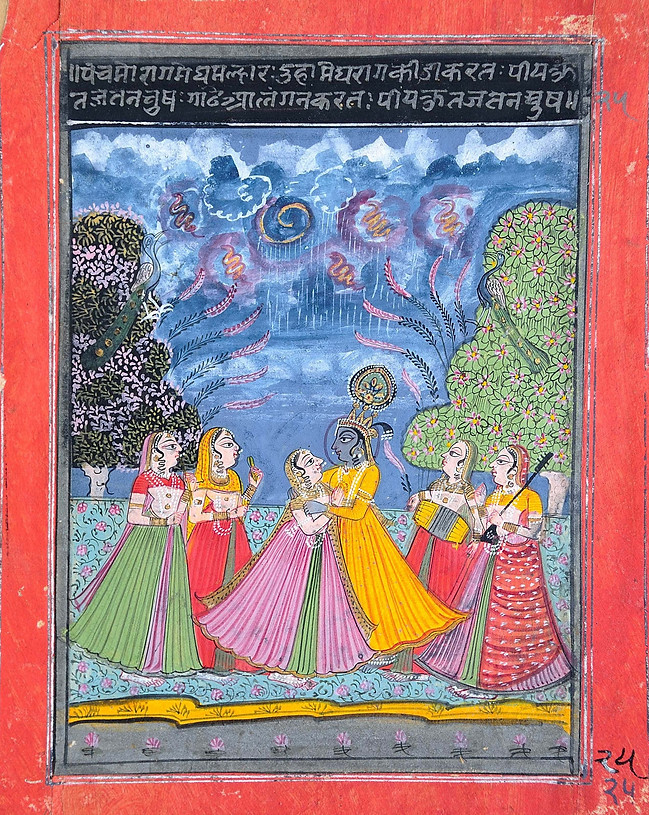top of page

“Ragamala paintings are visual interpretations of Indian classical music"
where ragas take shape as figures, moods, and scenes. Rooted in the belief that music evokes not just sound but feeling, atmosphere, and narrative, each painting becomes a meditation on a specific raga’s emotional and temporal essence.
The tradition emerged in the 16th century, flourishing in the royal ateliers of Rajasthan, the Deccan, and the Pahari hills. Each painting is accompanied by a dhyāna—a poetic verse naming the raga and evoking its emotional character. The six parent ragas were often depicted as male figures, paired with female rāginīs and sometimes sons, forming extended musical lineages.
" Today, Ragamala stands not only as a testament to the synesthetic imagination of Indian art, but also as a living archive of the emotional intelligence embedded within its classical traditions."

This Ragamala painting captures a tender moment between Krishna and Radha, lost in each other during the monsoon. Around them, cowherd maidens play music, as dark clouds gather and rain begins to fall. The scene is a visual interpretation of Megha Malhar, a raga long associated with the monsoon season, said in legend to have the power to call down rain.
The deep blues and swirling clouds evoke longing and anticipation, while Krishna’s golden robe radiates joy and divine warmth, capturing the emotional rhythm of Megha Malhar.
Megha Malhar Raga : Title
1700–1799 : Date of Creation
Salar Jung Museum : Location
Ragamala : Subject Keywords
Painting : Type
Pigment on Paper : Medium
Rajasthani : School

bottom of page